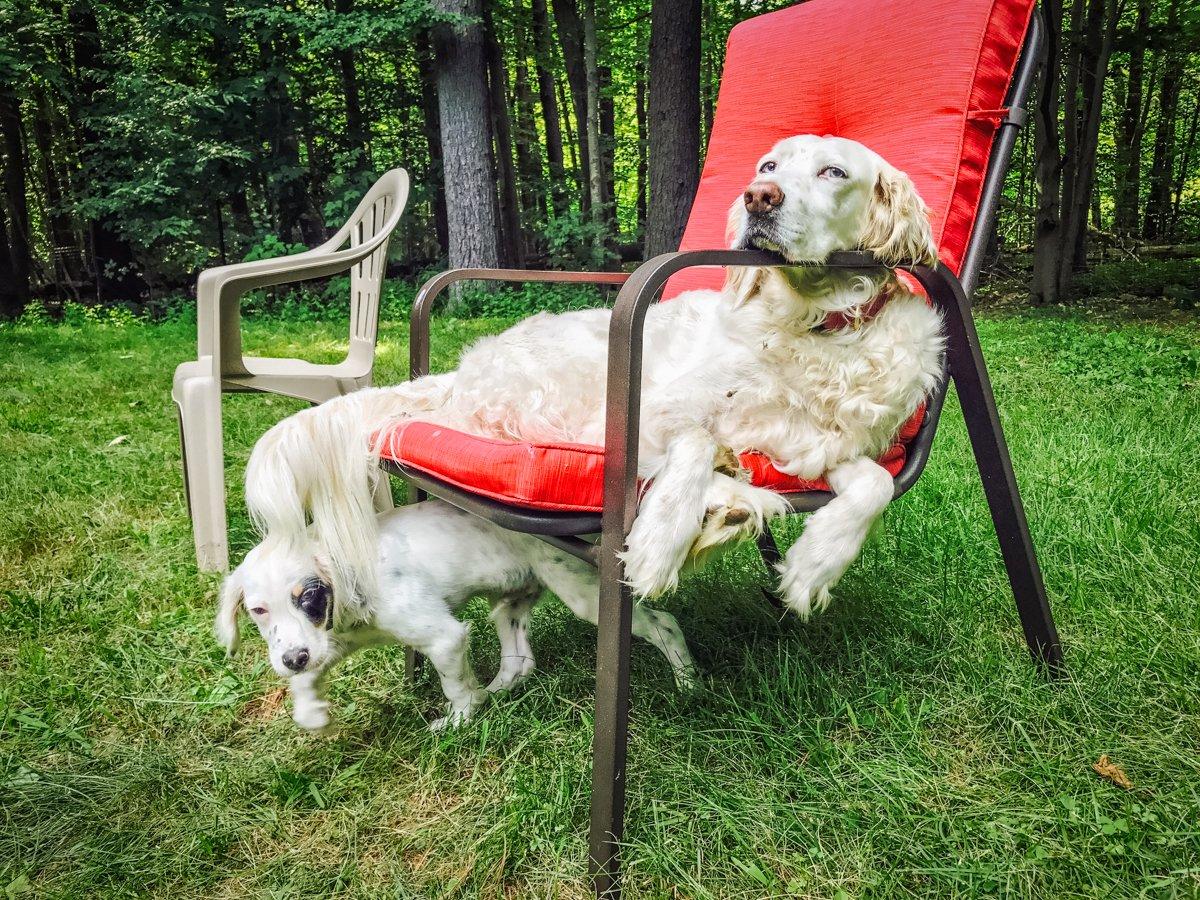Some Tips for Young and Old Dogs Living Together
You're likely pretty excited about bringing your new puppy home. Your older hunting dog might not share the same feelings.
Ways to introduce your adult dog to the new pup in your life follow here.
Short, Positive Interactions
Your adult dog has learned plenty in your time together. It's the pup that needs some schooling.
Dogs of course have instinctive ways of sorting out the pecking order. An older canine has earned territorial rights over your home, yard, truck and where you exercise (and hunt) this dog.
Enter the puppy. S/he has no rules and is full of endless energy. The older dog is set in his or her ways. A hard-charging, wildly running pup changes this.
Read their body language as they interact. The older dog will likely growl when the pup pushes things too far. Slowly, surely, the young dog should get the message, and show increasing respect for its elder.
You've introduced this wild child into the mix. The older dog will also do its share of the teaching.
This effort takes time, energy and patience.
Territorial Respect
You likely feed you older dog in the same spot, at around the same times. This canine expects and appreciates it with a tail wag and alert eyes, full of anticipation.
The pup might just be thinking "food" when it hears you scoop from the kibble bags (one for the young one; one for the older dog). They might dash in fast with no respect to the older dog's food or eating spot. This can spell trouble. Anticipate it. This is a teaching moment for the pup.
If possible, always feed them separately at first, in different locations.
Control the young dog as the older dog eats first. Or, if you don't feed the two at the same time, still maintain separate areas, as the older dog will likely check out the pup's new food bowl and water dish.
Again, this will take time, too.
Outside of feedings, older indoor dogs often like to relax in comfortable chairs or couches. Teach the puppy to respect these locations. The elder canine will also do plenty as this goes, expressing a hard look, low warning growl and even more displeasure.
Again, the pup should get the message, though you want to ensure its safety while learning the ropes.
Browning Insulated Dog Crate Bedding in Realtree MAX-5
Time Together
Indoor dogs interact in a smaller space, confined by the limits of your home. Often "trouble" occurs here; less so outdoors, especially as they begin to hunt together.
Again, reflecting back on the short, positive interaction theme, combined with the territorial respect notion, the dogs - older and younger - will begin to accept each other.
The key is to give each dog a steady amount of your time, both separately and together.
Pay attention to how they interact. Gently but firmly, using verbal commands of "no," "sit," "stay," and "leave it," teach the puppy to respect the older canine.
Eventually, they'll learn to accept the other, or at least define limits to the relationship.
Do you have any tips to share on introducing your older hunting dog to a puppy? Please comment below.
Bonus Read: How to Crate Train Your Hunting Dog Puppy
Go here for more Realtree small game hunting. Follow us on Facebook.








